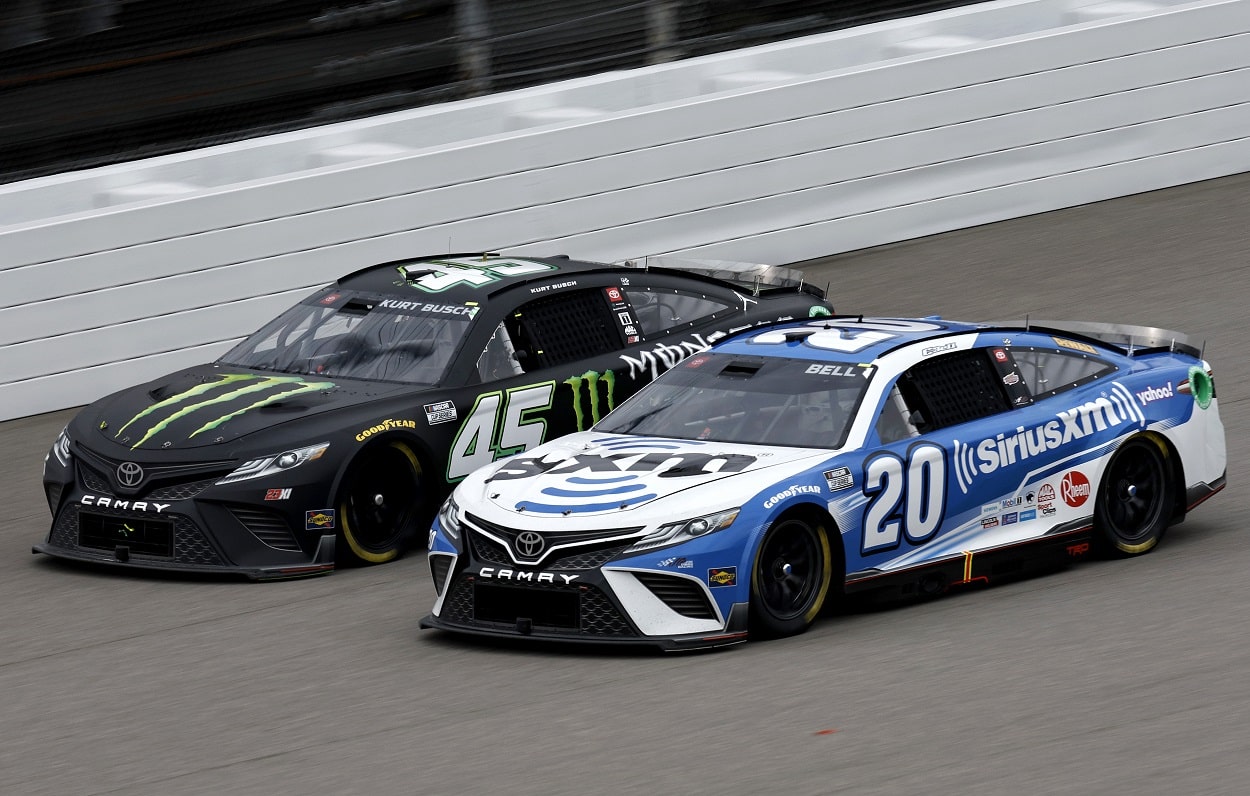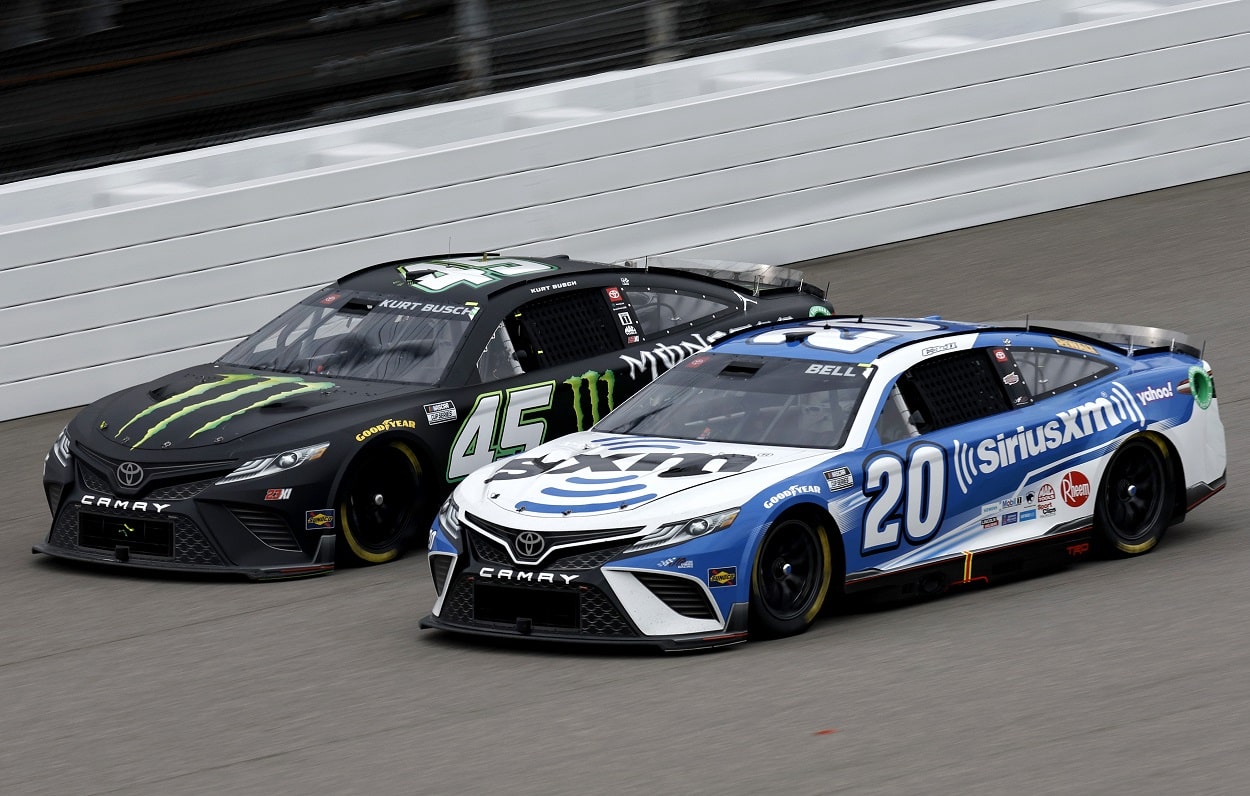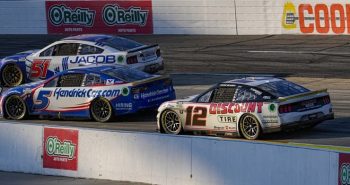NASCAR
Why Toyota Teams Should Be Encouraged Despite Some Issues at Michigan International Speedway

No NASCAR Cup Series manufacturer had more success than Toyota through practice and qualifying last weekend at Michigan International Speedway. And none had more problems during the actual race, but that disappointment should not diminish the outlook for the Toyota teams in the 2022 stretch run.
Toyota swept the top five spots during practice, with Christopher Bell in 15th the only one of the six Toyota drivers in the field outside of the top five.
Bell was second, however, in qualifying behind pole sitter Bubba Wallace as Toyota took each of the first three spots and five of the top 10. This time Ty Gibbs in the No. 45 car for the third straight week as the replacement driver for Kurt Busch was the only Toyota outside of the top 10, but even he started the race 11th.
That should have set up a dominant day for the teams of a manufacturer that has improved significantly throughout the first season of the Next Gen car and arguably has the best overall speed on intermediate tracks such as the 2.0-mile track in Michigan.
Problems began to plague Toyota teams early at Michigan despite leading the entire first stage

The event started well Sunday for Toyota. Wallace, Bell, and Gibbs combined to lead all 50 laps of Stage 1, although the first caution of the day collected Kyle Busch after the No. 18 team had a poor pit stop during the lap 20 competition caution that set him back in the field and into the heart of a wreck on the restart.
Bell captured the playoff point for winning the first stage, and Denny Hamlin won Stage 2. However, Bell was the only other Toyota driver to gain a point in that stage with his fourth-place result after 120 of 200 laps.
Bell’s day ultimately went sideways on Lap 161 when he and Ross Chastain crashed in Turn 4. That was the final caution of the race and the pit cycle that allowed Kevin Harvick to take the lead for the first time.
Harvick gained the advantage on the ensuing restart and accumulated a lead of nearly three seconds over Wallace in second and Hamlin in third by the end of the race.
The runner-up result was particularly difficult for Wallace to rationalize because he has yet to win a race this season and now has only three more chances after he did not capitalize on a weekend when he won the pole and arguably had the fastest car in the field for the first time all year.
“She was fast all week, man,” Wallace said of his No. 23 Toyota on pit road after the race. “Just I’ll wear this one on my heart for a while. I failed everybody.”
That was potentially the prevailing sentiment from nearly every Toyota driver Sunday. Gibbs, Wallace’s temporary teammate at 23XI Racing, managed to finish 10th, but he had to work back from being involved in the same Lap 25 incident as Kyle Busch.
Still, the ultimate takeaway for the Toyota teams from the Michigan race should be how much speed they had in their cars rather than the issues that kept one of them from taking home the trophy.
While pit-stop and mechanical issues have plagued both 23XI and Joe Gibbs Racing through much of the season, those are still easier problems to fix than not coming to a race track each week with the baseline speed necessary to compete for a win.
Toyota has been strong on similar tracks throughout much of the season
The Toyotas have been somewhat dominant on intermediate-sized, non-superspeedway tracks since the spring while having struggled mightily on road courses. Kurt Busch won the May race at Kansas Speedway, while Hamlin followed with a Coca-Cola 600 victory in the next points-paying race two weeks later at Charlotte Motor Speedway.
Bell won at the flat, 1.058-mile track of New Hampshire Motor Speedway in mid-July, and Hamlin and Kyle Busch would have finished first and second, respectively, the following week at Pocono Raceway if their cars had not failed post-race inspection.
Had Hamlin kept the Pocono win, a Toyota driver would have won four of the last six races on non-superspeedway oval tracks one mile or larger before Michigan. Luckily for Toyota, six of the 10 races in the NASCAR Playoffs fit that description.
So, yes, Michigan was a disappointment for the Toyota camp based on the speed its cars showcased in practice and qualifying. Still, that strength should continue to give Toyota drivers confidence as they head into the most crucial portion of the season, so long as the in-race details get fixed.
Stats courtesy of Racing Reference
Like Sportscasting on Facebook. Follow us on Twitter @sportscasting19 and subscribe to our YouTube channel.
RELATED: Why Kevin Harvick’s Michigan Win Was the Most Clutch Victory of the 2022 NASCAR Cup Series Season











